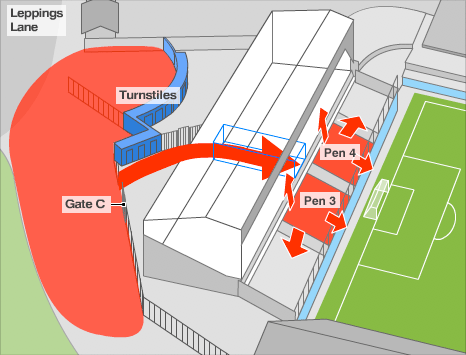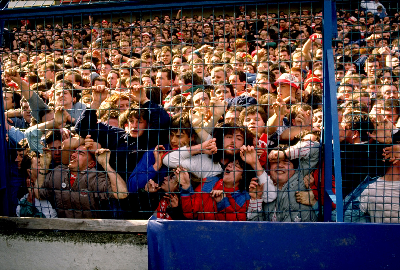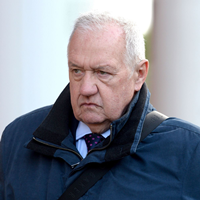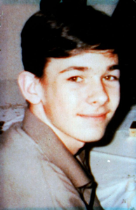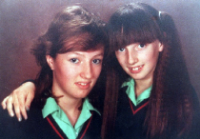There are many disasters that have occurred in living memory and some have stuck in my mind more than others due to the tragic loss of life under circumstances that could have been avoided. Of these I have chosen the following three disasters.
- The collapse of a mining tip at Aberfan in 1966
- The fire at Bradford City football ground in 1985
- The crush of fans at Hillsborough football ground in 1989
Some of the images below have more information, click to open.
ABERFAN
I was 20 and remember it vividly. At the time it just seemed a tragic loss of life due to natural circumstances, but as events unfolded and at the inquiry in 1967, it became clear that the disaster was due to "bungling ineptitude by many men” and whilst “not villains but decent men, who were led astray by foolishness or by ignorance or by both in combination”, were responsible for what happened at Aberfan" and the loss of life of 144 people, 116 of them young children.
On October 21, 1966, a coal tip on the hillside above the town of Aberfan in South Wales collapsed, creating a tidal wave of slurry that descended rapidly on to houses and a school below. Children aged 7-10 and staff of Pantglas Junior School were about to start their lessons. At lunchtime on this day they would all be leaving school for their half-term holiday and were naturally excited and happy. A day later and the school would have been empty and a disaster would not have become a tragedy. Suddenly the school started to shudder and they heard a deafening roar, like a jet plane taking off close by it was later described, and before anyone could react the school was engulfed by around 1.5 million tons of cloying black sludge. By the time it stopped dozens of children and adults had been buried where they sat or stood.
At the edge of the Merthyr Vale coal mine were seven massive sludge piles or spoil tips, as they were called, built up over time from coal waste. Complaints had been made to the National Coal Board (NCB) many times including Pantglas School who 3 years earlier had sent a petition to the NCB asking for it to be looked into. The tip that particularly raised concerns was 111 feet high, and a quarter of a mile above the school. All that separated them was a steep slope.
The following emotional excerpt was taken from a BBC news report at the time - “In the village of Aberfan in the heart of the south Wales coalfield it was raining, as hard and unrelentingly as it had been for days, running into weeks. As the children left the coal-fire warmth of home they emerged into streets shrouded with a dense, cold fog. Mothers waved goodbye from the doorstep, never imagining in their worst nightmares that it would be for the last time. The 240 pupils of the Victorian red brick Pantglas Junior School wound their way through the gullies, the back lanes of the miners’ terrace houses, crunching over layers of sodden clinker swept from the hearth and tipped there on a daily basis. As the children congregated for morning assembly, they were excited. At midday the half-term holiday would begin. Their daily rendition of ‘All Things Bright and Beautiful’, a hymn written a few miles away in the tranquil Usk Valley, was postponed that day. They would sing it before they went home when the head teacher planned to wish her pupils a safe and enjoyable holiday. The children filed into classrooms.”
On the day of the disaster, a crew arrived at Tip Number 7 to begin work at about 7:30 am. On arrival they noted that the tip had started to slide and the track for the crane was 3metres from where it should have been. Unfortunately they did not have a telephone (no mobiles in those days) so were unable to report the problems quickly. They sent someone down to report to management but resolved to move the crane back from the edge. By 9 am the tip had subsided by another three metres.
At the public inquiry that followed, amongst the first hand testimonies given by the crew, was this account given by the crane driver, Gwyn Brown. “I was standing on the edge of the depression. I was looking down into it and what I saw I couldn’t believe my eyes. It was starting to come back up. It started to rise slowly at first. I still did not believe it, I thought I was seeing things. Then it rose up after pretty fast, at a tremendous speed. Then it sort of came up out of the depression and turned itself into a wave - that is the only way I can describe it - down towards the mountain . . . towards Aberfan village . . . into the mist”.
The landslide involved about 105,000 cubic metres of spoil, which travelled at 17 to 34 km/h over a distance of about 500 metres and engulfed 16 houses as well as and Pantglas Junior School. On that basis the landslide took around 1 minute to engulf the school. They had no chance to escape, even if they knew what was happening.
The reaction from the community was very quick with miners desperately digging for survivors. The last survivor, 8 year old Jeff Edwards, was rescued less than 3 hours after the school was buried by sludge. Jeff would later say “I couldn’t move at all because my desk was against my stomach. On my left-hand side there was a girl’s head next to my face, and I couldn’t get away from the fact she had died.”
Miraculously, some children survived. Seven-year-old Karen Thomas and four other children in the school hall were saved by their brave dinner lady, Nansi Williams, who sacrificed her life by diving on top of them to shield them from the slurry. Nansi was collecting dinner money when she heard the noise, must have realised something was wrong and with no thought for her own safety she told the five children who had been queuing up to give her their dinner money to get on the ground and flung herself on top of them. At just 44 years old Nansi was killed instantly but the five children she had been shielding all survived. Karen recalled “We didn’t know what was happening. We couldn’t hear anything else. It was just our voices and screams we could hear”.
Some of the stories told by those involved are heart-breaking – just one involved Marilyn Brown, whose daughter Janette (10) was killed. “The last time I saw her was waving her off at the doorstep. She hadn’t wanted to go as it was half term the next day but my husband Bernard got cross with her and said she had to go. I said thank goodness for that, I can have my tea and toast now. When I was told she had died, what seemed like minutes later, I cried and cried and cried and I don't think I've cried since, no, not even at the funeral. I can't cry. I don't know why. It's not as if it isn't there. It is. I can feel it, a big lump in my chest. Sometimes I think if I had been able to cry, it would have got rid of that lump”.
Ten-year-old Phil Thomas was buried as he walked across Moy Road outside the adjacent senior school and briefly lost consciousness. Afterwards he said “I woke, pitch black, buried, I couldn’t see a thing, then I started crying, I was shouting for my mum.” Phil was still in grave danger due to a torrent of water from fractured mains was spreading through the slurry. Len Haggett, one of the first firemen on the scene, said “He was trapped by his feet and we just couldn’t get him out. The water was rising and coming up to his head. We thought he might drown. There were about seven of us firemen there, and we gave this one final lift and we lifted this wall that had collapsed on him. We were elated that we’d saved his life but to this day I don’t know how we managed to lift that much weight.”
A makeshift mortuary was set up at the local Bethania Chapel in the evening for families to identify their loved ones and then they were buried in a mass grave in the local cemetery on the 27th Oct. Perhaps we don’t hear of what happens to bodies before they are buried but one of interest is that on the 22nd Oct (the next day) the Midland Institute of Embalmers was holding its annual ladies night ball and they were interrupted by a request to go to Aberfan to help with embalming the bodies of the children ready for burial. They went without hesitation and performed a difficult task quietly and efficiently before leaving.
In 2007 the Aberfan Memorial Charity refurbished the garden area and replaced the original stone memorials and archways, which had weathered over the years with polished pearl white granite and all inscriptions, were re-engraved. The cemetery now is a fitting memorial to those who lost their lives.
The enquiry and recriminations that followed this tragedy are hard to read today without some anger at the way the establishment stuck together and no-one was prosecuted, lost their jobs or even faced some sort of backlash from the public or the media. After pressure from Parliament, an official enquiry was set up by the Secretary of State for Wales on the 26th Oct 1966 that lasted 76 days, the longest at the time, largely due to the NCB stubbornly refusing to accept any blame for the tragedy.
The headline from the inquiry report stated, “Our strong and unanimous view is that the Aberfan disaster could and should have been prevented. The report that follows tells not of wickedness but of ignorance, ineptitude and a failure in communications. Ignorance on the part of those charged at all levels with the siting, control and daily management of tips, bungling ineptitude on the part of those who had the duty of supervising and directing them and failure on the part of those having knowledge of the factors which affect tip safety to communicate that knowledge and to see that it was applied."
The tribunal's findings, in short, were that:
- Blame for the disaster rests entirely upon the National Coal Board and certain individuals.
- There was a total absence of tipping policy and this was the basic cause of the disaster.
- There is no legislation dealing with the safety of tips in force in this or any country.
- The legal liability of the National Coal Board to pay compensation for the personal injuries (fatal or otherwise) and damage to property is incontestable and uncontested.
What became apparent was that the tip was built on a known stream and that there had been several minor slips previously that were known by colliery management and tip workers. The specific cause of the disaster was the build-up of water in the pile due to several days of heavy rain which liquidised the waste and this should have been recognised by the colliery management. The responsibility for the tips was with the mine engineers who had little understanding of tip stability issues.
The disregard of the NCB and the colliery staff for the tip's unstable geological conditions and its failure to act after previous smaller slides were found to have been major factors that contributed to the catastrophe. The tribunal found that the tips had never been surveyed, and up to the time of the landslide were continuously being added to in a chaotic and unplanned manner. Repeated warnings about the tip's dangerous condition had been ignored.
The head of the NCB, Lord Robens was instrumental in delaying the tribunal and avoiding any responsibility for what happened as well as refusing to pay for other dangerous tips to be removed. Later it was shown that he lied to the tribunal and if this had happened now he would have been justly denounced, vilified and prosecuted. There would be charges of corporate manslaughter brought. At the time Lord Robens was a powerful man with influence at the highest levels of government and the media. He continued to have a political career and ironically ended up reviewing public health and safety for the British government. Robens didn’t turn up on the day of the disaster, instead going to the University of Surrey to receive a chancellorship which says it all really.
There is also the story of the Queen’s delay in going to Aberfan which was her choice as she was worried that attention would be drawn away from the recovery operation. She said to her advisors “People will be looking after me, perhaps they'll miss some poor child that might have been found under the wreckage.” She later said that it was the biggest regret of her life not to go, although she did send Prince Phillip; when she did go, eight days later, she was visibly distressed. I didn’t watch the ‘Crown’ version of this event but I understand that it showed her in a very poor light, repeatedly rebuffing requests to go there and faking tears when she did. People who were there at the time said that she was genuinely upset and that the Crown’s portrayal was unfair. On TV she said “I dabbed a bone-dry eye and by some miracle no one noticed”. What TV will do to improve the ratings!
It’s worth recording that eventually this disaster led to changes to the way the mines operated. The Mines and Quarries (Tips) Act 1969 & 71 provided guidance for stable tips and details on construction and inspection of tips. The majority of tips in south Wales have been removed and the valleys, like Aberfan’s, are green again. It’s interesting to note that there are still slips occurring as shown by the landslide from the Llanwonno tip in Tylorstown in the Rhondda valley that came after Storm Dennis in February 2020 although no-one lost their lives. The photo shows that the tips have only a very thin layer on the surface which is unable to prevent any substantial landslide caused by heavy rain.
The Mayor of Aberfan launched a relief fund which raised £1.6 million by the time it ended in Jan’67 but the government caused controversy by taking £165,000 to deal with other tips in the area because the NCB refused to do anything. After an outcry this money was returned to the fund. The Welsh Charity Commission had to decide how much compensation to award and considered asking questions like “how close were you to your child” in order to refuse compensation to those that were not close. Eventually each family was awarded £485 per child, a risible amount, as they were advised any more would ruin the lives of the working class people, who wouldn't be used to large sums of money. This action was described as the second Aberfan disaster.
BRADFORD CITY FIRE
On the 11th May 1985, third division Bradford City were playing Lincoln City in a league football match at the Valley Parade Stadium. There were 11,000 spectators at the game mainly there for the presentation of the Division 3 trophy as Bradford City had already secured promotion to the second division. It was the first trophy they had won in 50 years and as well as the spectators there were television cameras there to record the celebrations which of course recorded the events of the afternoon in vivid detail for the general public to witness.
The fire broke out near half-time at one end of the main stand and was thought to have been started by a spark from a match or a cigarette dropped through a gap in the wooden frame on to piles of rubbish which had been collecting for years. Later a charred copy of the local paper dated November 1968 was found amongst the litter. The stand’s wooden roof, covered with layers of highly flammable, bituminous roofing felt, offered no resistance to the flames. Burning timbers and molten materials fell from the roof onto the crowd and seating below and dense black smoke enveloped a passageway behind the stand, where many spectators were trying to escape through the turnstiles and doors at the rear of the stand, only to find them locked. There were no stewards present to open them although some were forced open.
The fire started at one end of the Main Stand, first noticed at 3.40 pm and within 4 minutes it was fully ablaze. A total of 56 people died in the fire, 54 supporters from Bradford and 2 from Lincoln. An elderly couple died huddled together in their seats. Another 258 were injured, many suffering life-changing burns.
Spectators later spoke of initially feeling their feet becoming warmer; one of them ran to the back of the stand for a fire extinguisher but found none. People who had escaped the fire tried to assist their fellow supporters. One man clambered over burning seats to help a fan, as did player John Hawley. Police officers also assisted in the rescue attempts. One fan put his jumper over a fellow supporter's head to extinguish flames. There were many examples of people bravely trying to help in spite of the intense heat.
One spectator, a retired mill worker, was seen walking across the pitch with his clothing ablaze until spectators and police rushed to help him by rolling him over in the grass until the flames were out. He died later in hospital of his injuries. Some of the photos taken that day are quite horrific and hard to look at.
The person who may have started this fire was later identified as an Australian, a Mr Eric Bennett, who had been seated in the stand right where the fire had started. Mr Bennett said he had been smoking a cigarette, which was still permitted then and had dropped the cigarette onto the floor in front of him. When he tried putting it out with his foot, it had unfortunately dropped through, in his words, “a knot hole”. Photographs taken by an on-duty policeman later seemed to corroborate his account. The inquest agreed with this conclusion and Mr Bennett who attended the inquest, was quite unequivocal about it, “he had dropped the cigarette that started the fire” and would never forget it for the rest of his life. His name was not released until 30 years later.
Some personal stories of the fire given in later years


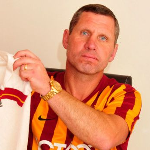




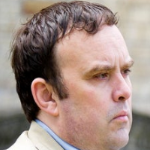
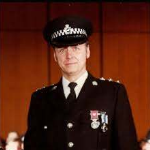
So how did this happen?
This club was very much at the heart of the local community. When the club was put into receivership in 1983, it was bought by Stafford Heginbotham, a former chairman of the club and Jack Tordoff, a former board member using funds given to them by the club’s supporters. This gave the impetus to the club to start a new invigorated campaign that led to the successful 1984-85 season.
Compliance with the Safety of Sports Grounds Act (1975) was required for all clubs in the 1st and 2nd Divisions and plans were already in place to demolish the main stand only two days later. Mr Justice Popplewell, who led the inquiry into the disaster, later concluded the tragedy would never have happened if the club had adhered to these regulations. One of its requirements was that ‘if a stand was wooden an evacuation had to be possible within two-and-a-half minutes’ - City’s main stand was engulfed by the fire in four minutes. The council had also written to the club on two occasions, highlighting breaches of the safety guide. Heginbotham would later claim that neither he nor his board received the letters. There was clear evidence of complacency, seen all too often in football after incidents such as this. If as concluded that the cigarette started the fire under the stand, why were no efforts made before to clear the rubbish which had been lying there for decades? The problem as always was the cost of lifting the boards as there was no easy access to the area underneath the stand.
Valley Parade was originally converted from a rugby ground to football in 1908 and not much had changed since then and was named by the way it was built into a valley. Some redevelopment had taken place over the years but the main stand was essentially the original. £400,000 had been allocated for re-roofing, replacement of the wooden seats and concreting the stand. In other words the antiquated wooden main stand that had hosted generations of fans and families only had to last for another day or so before being demolished.
The Popplewell Inquiry concluded that this was the open and shut case of the fire being started by a spectator discarding a lighted cigarette. Unfortunately Bradford (unlike Liverpool after Hillsborough later) seemed happy to accept this; after five days of testimony, a 27-page report and everyone moved on. There was no appetite for a re-enactment of events.
However, the inquiry did lead to the introduction of new legislation to improve safety at football grounds. Among the outcomes of the inquiry were the banning of new wooden grandstands, the immediate closure of other wooden stands deemed unsafe and the banning of smoking in wooden stands.
/>Martin Fletcher, who lost three generations of his family in the stadium fire and later wrote a book called '56: The Story of the Bradford Fire' disputed this finding and all but accused the new owner of the club, Stafford Heginbotham, of starting the fire in order to claim the insurance money. Although the book raised some serious doubts about the cause of the fire, many felt that after so much time it was raking over old coals and best left alone.
This book, serialised in the Guardian in 2015, claimed that research of newspaper files going back 15 years found that business premises owned by, or at least connected to, Heginbotham had been involved in eight other fires resulting in huge insurance claims - equivalent to £27million today. There actually used to be an old saying in Bradford: ‘If you see smoke go up in Bradford after 6pm, that'll be one of Stafford's’. It was also claimed that Heginbotham was in desperate financial trouble and facing a £2million bill to bring Valley Parade up to required safety standards following the club’s promotion. Bradford City received insurance pay-outs and grants totalling £988,000 as a result of the fire, around £7m in today’s terms and was later given an additional £1.46m from the local authority.
In his book Fletcher does not make any direct allegations against Heginbotham but he does believe his history with fires, warranted further investigation - “Could any man really be as unlucky as Heginbotham had been?” he asks. There has, however, never been any further investigation but as reported in the Aberfan story above, the rich, powerful and influential never seem to be brought to account. Having read many accounts of this tragedy, I think it is highly unlikely that Heginbotham was responsible. It was just an awful accident I have also read a blog by Martin Odoni from the Critique Archives that all but rubbishes Martin Fletchers veiled accusations.
Most of the above accounts concentrate on the spectators at the ground and those that were killed but it would be remiss not to mention those who were seriously injured and the work both at the hospital and the specialist burns units in the days and weeks after the fire. The money raised from the appeal (circa £3.7m) was used in part to fund the internationally renowned burns unit that was established in partnership between the University of Bradford and Bradford Royal Infirmary, immediately after the fire and which has also been Bradford City's official charity for well over a decade. The Bradford Burns Unit was set up by Professor David Sharpe after he received many of the victims following the fire and they treated over 200 patients some with revolutionary experimental treatments.
The memorial erected to honour the dead lists their names and is at the entrance to the new ground which opened 14th December 1986. Since then further developments have resulted in a 25,000 all-seater stadium, unrecognisable from how it used to look, and a ground fit for a premiership club. Note: Unfortunately, at the time of writing, Bradford City is currently languishing in 20th place in League 2, which is one division lower than their position in 1985.
THE HILLSBOROUGH DISASTER
Unlike the Bradford City Fire, the residents of Liverpool, especially those affected by the disaster at the Hillsborough Stadium in Sheffield have never given up on their fight for justice and consequently the memories of what happened are still quite fresh in our minds.
The tragedy which happened on April 15th 1989 at the FA Cup semi-final between Liverpool and Nottingham Forest at Hillsborough, a neutral venue and home to Sheffield Wednesday, was largely attributed to mistakes by the police. The match was sold out and around 53,000 fans were expected to turn up. At a time when football hooliganism was still prevalent, the two sets of fans were directed to enter from different sides of the stadium and Liverpool supporters with tickets for the standing terraces were to enter along Leppings Lane.
There they were to pass through one of seven turnstiles, after which there were two tunnels that opened into “pens,” areas enclosed by high fences. The central pens (3 & 4) were accessed from the main tunnel, while the other side pens were entered through a less prominent corridor. As a consequence, most fans entered the central pens (3 & 4) through the main tunnel.
Due to the limited number of turnstiles, a bottleneck formed as approximately 10,100 fans attempted to enter the stadium from Leppings Lane. By about 2:30 pm, some 30 minutes before kickoff, more than half of those fans were still outside. Hoping to ease congestion, Yorkshire Police Chief Superintendent David Duckenfield, who had little experience policing soccer matches at Hillsborough, approved the opening of exit Gate C at approximately 2:52 pm. This gate was primarily to allow large numbers to exit the ground quickly and because of the lateness and the numbers of fans outside who wanted to see the match, it was estimated that at least 2,000 fans entered through this gate and the majority headed down the main tunnel to the already crowded pens 3 & 4.
The inevitable consequence of this was that the fans already there at the front were pushed forward and due to the high fencing had no-where to go and were crushed. Almost incomprehensibly, a total of 96 people were killed, the last of whom died in 1993 when he was taken off life support. In addition, more than 760 were injured, some seriously.
Due to the presence of the 6 ft high barrier, it was impossible for those at the front to simply spill out on to the pitch. Some managed to be hauled up the the next level by fellow fans. Some managed to climb over the bodies of others and get over the fence. Some simply fell under the crush of bodies and had the life squeezed out of them. It's hard to imagine how you can be asphyxiated by a crush of bodies when, in theory, you should be able to breathe easily but this is how they mostly died. A major factor in why so many died is that many of those who spilled out on to the pitch needed oxygen and this just was not available. There were a few St John's ambulence support staff but they were inadequately supplied or trained to deal with the disaster. The ambulence service initially received confusing requests for help that delayed them and when they arrived the numbers of people in the way slowed them down again. One of the witnesses said that the vast amount of rescue work and the co-ordination of it was by the rest of the fans who had made it on to the pitch. Another witness was highly critical of the police who stood by waiting for orders, although they did eventually get stuck in. The sad fact is that as many as 30 or 40 could have been saved if there had been enough trained personnel, if the ambulences had arrived quicker and access to the pitch had been easier. There was simply no organised response to an event that was unknown in football.
The authorities initially thought that the problem was due to unruly fans, and it was not until five minutes after kick-off that the match was halted. Immediately afterwards police blamed the fans who they said were drunk and disorderly and Duckenfield claimed that Gate C had been forced open. However, in 1989 an interim report faulted law officials, notably citing their failure to close the main tunnel after pens 3 & 4 had reached capacity. Incredibly though, in spite of clear evidence that the police were at fault by allowing too many fans to enter the stadium, the official inquest a year later said that there was insufficient evidence to bring criminal charges and even worse the coroner ruled that by 3.15, when the first ambulance arrived, there was no hope of saving any of the dying, therefore blocking any investigation of the rescue efforts and indeed ruled that all the deaths were accidental.
Calls continued over the years for further investigations but it wasn’t until 2009 an independent panel was formed to review the tragedy. Three years later it announced that the police had engaged in a far-reaching cover-up, by faulting fans and falsifying reports in an effort to hide their own mistakes. The panel found no evidence that alcohol or unruly behaviour had played a role in the disaster and it believed that as many as 41 deaths could have been averted by better rescue efforts. Another inquest began in 2014, and the following year Duckenfield testified that he had lied about fans opening Gate C and in addition, he admitted that his failure to close the main tunnel leading to the central pens directly caused the deaths. In 2016 the jury found that the 96 victims had been “unlawfully killed” and the following year criminal charges were filed against six individuals connected to the disaster.
Duckenfield himself faced 95 charges of manslaughter; the 96th Tony Bland who was critically injured and had his life support lawfully turned off more than a year after the incident, was excluded from the charges for legal reasons. Duckenfield pleaded not guilty, arguing that the disaster was caused by other factors including historic safety flaws at Sheffield Wednesday’s stadium itself and failings by some of the other police officers. His barrister, Benjamin Myers QC, pointed to Duckenfield’s inexperience as a match commander and argued he was being held to a higher standard than others. The main factor in Duckenfield’s argument was that he had expressed concern about opening Gate C but Supt. Marshall in the control room said that if nothing was done people outside would be killed or seriously injured and under this pressure and due to his inexperience he ordered the gate to be opened. In spite of the evidence against him he was found not-guilty of the gross negligent manslaughter of 95 Liverpool fans.
Understandably the relatives of those killed were distraught at the verdict and asked how there could be an unlawful killing verdict at the inquests but a not guilty verdict in the prosecution. Christine Burke, whose father, Henry Burke (47), was killed in the crush and was in court stood up sobbing and cried out to the judge that as 96 people was unlawfully killed, “I want to know who is responsible for the death of my father, because somebody was.”
Sue Hemming, the CPS director of legal services, said: “The disaster at Hillsborough 30 years ago has caused unimaginable suffering to the families of those who sadly lost their lives and to everybody affected by the tragic events of that day. They were let down with the most catastrophic consequences imaginable. I know how important these proceedings have been to everyone, even though they came far too late”.
Of the others charged, Graham Mackrell, the Sheffield Wednesday chief executive was found guilty under the Health and Safety at Work Act and was fined £6,500 with costs of £5,000. Sir Norman Bettison, former Chief Inspector, who lied to the inquest about the culpability of the fans, had all his charges dropped in 2018 and the other three have had their court cases delayed. Is anyone really surprised by this outcome, I’m not. So no-one responsible for crowd control and safety has been brought to account and there has been little or no satisfaction for the families of those who have died or been severely injured, although the CPS said last year (2019) that they are appealing Duckenfield’s acquittal and requesting a re-trial.
Another fact I find incredible is that officers who claimed for trauma after Hillsborough were given more than £90,000 in compensation on average, while families of relatives and children killed in the tragedy typically received only £3,500. Sixteen officers received payments totalling £1.5million in the aftermath of the event. Can someone explain the justice in that?
Personal Stories of the Day
Arthur Horrocks,41 went with his nephew Malcolm Golding who told his story. They had reached pen 3 when the crush started. He explained is as follows “It felt like a kind of paralysis that prevented any movement and I was concerned for Arthur who didn’t seem to be responding and was motionless. Suddenly after about 5 minutes the crash barrier, about a foot in front of us, gave way and everyone was propelled forward. I scrambled to my feet but noticed that Arthur was under a pile of bodies. I managed to get him out and with some help lifted him over the 6ft radial fence on to the pitch. He wasn’t moving and I thought he had feinted. I was ushered to a van by a policewoman, who said that Arthur was in good hands and would be safe. The last I saw of Arthur, he was hanging from a St John’s Ambulance collapsible trolley being wheeled across the edge of the pitch. It was at the hospital when my brother said ‘Where’s Arthur’ that reality struck”. Malcolm has asked himself many times - why had no one tried to save Arthur, or had they? Why did he allow himself to be taken to the van? Could he have made any difference"?
Derek Bruder, an off-duty officer watching the game that day, went to the aid of Kevin Williams in an attempt to save the teenager's life. “I saw this man lying on the floor convulsing. The police cordon in front of the north stand appeared unconcerned; this agitated the supporters in the stand, who were shouting for them to go and help the people on the pitch. None of the police officers left the cordon. I walked through the cordon without being challenged and then went to the man having convulsions. Almost immediately I was joined by a St John's Ambulance man. I identified myself as an off-duty police officer. He then said to me: "You do mouth to mouth and I'll do heart massage." "I then took his pulse in his neck. I could feel a slight pulse. I and most police officers have only basic first aid knowledge. When I administered first aid to the man I felt totally inadequate on reflection. However, with that particular man, I don't think more knowledge would have helped, though it might have in others". He also claimed that a police inspector, Matthew Sawyers, tried to get him to change his testimony about feeling a pulse on Kevin's neck.
Kenneth Derbyshire (22), escaped with his life. “I will never forget what happened that day. The feeling went from absolute joy to fearing for my life. I remember walking through the turnstiles, being in the tunnel and then just a surge of people. A wall of people hit me. I survived by being pulled up from the balcony above me. It was the worst day of my life and will be with me for all time. I saw people dying in front of me and crying for help but I couldn't do anything.
Peter Hooton, a pop star with ‘The Farm’ was one of the thousands of Liverpool fans at the game. “It was common knowledge to football fans that the Leppings Lane was a "bad end", even before the pens were put in. It was a surreal day; it was like it wasn't happening because of so much confusion. I was in the north stand. I went on to the pitch because I saw casualties coming through and people getting CPR in and around the penalty area at the Nottingham Forest end. I went up to the police line and asked what was happening. They said: "We don't know. We are waiting for orders," I pointed to people giving others the kiss of life and said: "Can't you help them?" They said: "We can't do anything until we get an order." Peter Hooton recorded a video for BBC Newsnight with his view of the disaster.
Anne Williams, mother of Kevin Williams who died, has been fighting for a new inquest into the death of her 15-year-old son for more than 20 years. “Kevin didn't even die from what they said. I've had numerous forensic reports from the top guy. I tracked down everyone that touched Kevin that day. These people were never ever called to Kevin's inquest. They've painted a different picture and I found out exactly what happened to Kevin. Kevin didn't die from traumatic asphyxiation; he wasn't dead by 3.15. There must have been others that were saveable, like Kevin. The cause of death was one thing I wanted to put right on the death certificate. If he'd got oxygen that day, he'd be alive. Unfortunately, Anne died of cancer in 2013 and never got to see it through.
Three witnesses saw Sisters Vicky (15) and Sarah (19) Hicks trapped with the older sister holding the younger one who appeared to have fainted and supporting her and calling for help. They had gone with their mother but been separated and not in the same stand as her. Jeffrey Rex said: “I saw the younger of the two girls faint as the pressure built in the crowd".” The court heard that fans in the pen had shouted at police to help the two girls, but nothing was done. In a statement, Mr Rex said: “We shouted at the police officer on the track around the pitch. He was standing right in front of us and looking at us. People were shouting at him to get the girls out, but he didn’t do anything. He just walked away”.
As with most tragedies lessons were learnt although this doesn’t help or console the grieving families of those who died, many of whom have been unable to truly recover. It had been hoped that the inquest and court cases held to get to the truth of what happened and to bring those who were responsible to account might achieve this. Fortunately though, thanks to the efforts of the families involved to never give up, I think it is fairly clear now what went wrong and who was largely responsible, still no-one has had to account in a legal sense for their actions. Whilst the police were held responsible and the ambulance services could have done more on the day, the major problem were the regulations that applied to safety at grounds in those days which was more concerned with the impact of violence by fans rather than safety of the fans, hence the 6ft wire cages to keep the fans off the pitch, which thankfully have now disappeared from all grounds.
 The Landslide, The School, The Graves
The Landslide, The School, The Graves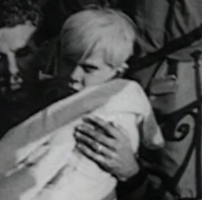
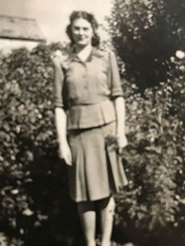
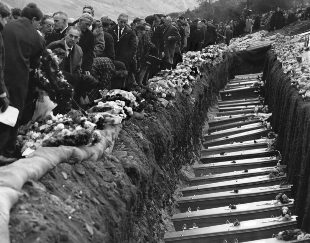
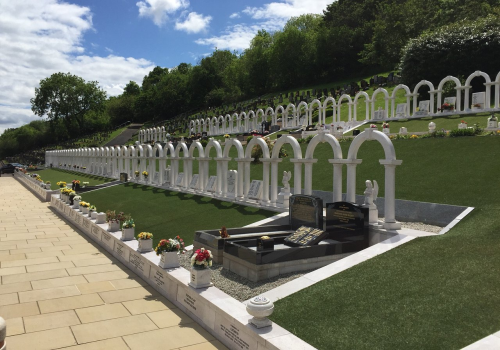

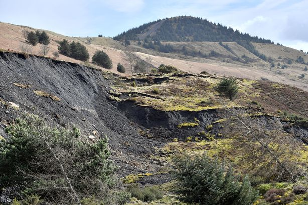
 Start, Middle and End of the Fire in the Main Stand
Start, Middle and End of the Fire in the Main Stand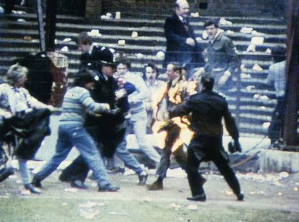
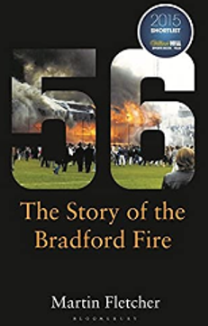

 Climbing over the Fence, The crush at the Fence, The Memorial at LFC.
Climbing over the Fence, The crush at the Fence, The Memorial at LFC.